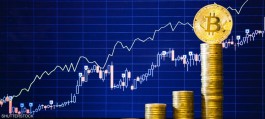Oil prices held near their highest levels since November, as strong gasoline demand in the United States and signs that the Federal Reserve will cut interest rates this year helped support traders' sentiment.
Brent crude was trading around $83 a barrel after rising 1.1% on Wednesday, with West Texas Intermediate crude trading above $79. U.S. gasoline stocks posted a fifth decline last week, while Gulf Coast refiners tapped crude stockpiles in a sign they are preparing to run strongly ahead of the peak driving season.
Oil has rallied this year amid tensions in the Middle East, higher shipping costs due to attacks in the Red Sea and OPEC+ cuts, though gains have been capped by strong supply from outside the group and disappointing growth in China. Prices also found additional support after Federal Reserve Chairman Jerome Powell said borrowing costs were likely to fall sometime this year, sending the dollar to a one-month low.
Supply dynamics, Chinese risks and geopolitics remain the key drivers of oil’s rally, said Vishnu Varathan, head of Asia economics and strategy at Mizuho Bank in Singapore. Despite the latest inflation figures coming in on the upside, Powell said he did not signal that the scope for rate cuts had been abandoned, which helped support risk sentiment in broader markets.
Meanwhile, Houthi missile attacks on a commercial vessel in the Red Sea resulted in the first confirmed deaths of crew members since the militant group began attacks on shipping on the vital trade route late last year. Three people were killed, according to U.S. Central Command.




































